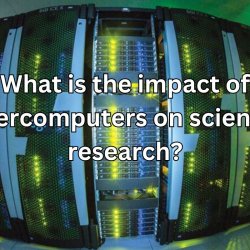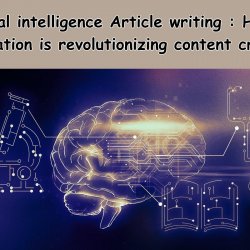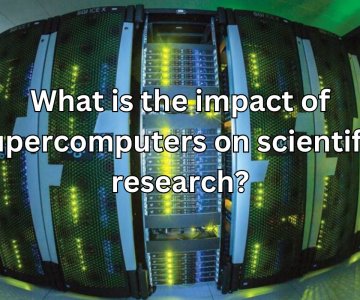What exact difference between artificial intelligence and machine learning with examples


What exact difference between artificial intelligence and machine learning with examples
Introduction
Welcome to the world of artificial intelligence (AI) and machine learning (ML) ! These are two buzzwords that you have probably heard a lot in recent years, but do you really know what they mean? In this blog section, we will delve into the definition of AI and ML , and highlight their key differences. We will also explore some examples of how AI is used in our everyday lives. By the end of this section, you will have a better understanding of these concepts and their practical applications.
Let’s start with the basics: what is artificial intelligence? In simple terms, AI is a branch of computer science that aims to create intelligent machines that can think and learn like humans. It is about making machines capable of performing complex tasks that typically require human intelligence, such as problem solving, decision making, and natural language processing. Examples of AI technologies include speech recognition, image recognition, and autonomous vehicles.
On the other hand, machine learning is a subfield of AI that involves teaching machines to learn from data without being explicitly programmed. In other words, rather than giving machines specific instructions on how to perform a task, they are given data sets from which they can learn patterns and make predictions. The more data they are exposed to, the more accurate their predictions become. One of the key advantages of ML is its ability to handle large amounts of data quickly and efficiently. This makes it an essential tool in fields like finance, healthcare, and marketing.
Understanding Artificial Intelligence and Machine Learning
Understanding Artificial Intelligence and Machine Learning
Artificial intelligence (AI) and machine learning (ML) are two terms that have gained a lot of attention in recent years, with their applications being widely used in various industries. While these terms are often used interchangeably, there are distinct differences between Artificial intelligence (AI) and machine learning (ML) . In this blog section, we will dive into the definitions of AI and ML and explore their distinctions.
Definitions:
To begin with, let us first understand what AI and ML actually mean. Artificial intelligence refers to the simulation of human intelligence in machines that are programmed to think and act like humans. It involves techniques that enable machines to perform tasks that would normally require human intelligence, such as decision making, problem solving, and language translation.
On the other hand, machine learning is a subset of AI that focuses on developing algorithms that enable computers to learn from data without explicit programming. It involves training machines on large datasets to identify patterns and make predictions or decisions based on the data.
Distinction:
One way to distinguish between AI and ML is by looking at the broader scope of AI. While ML is a part of AI, AI as a whole encompasses a wider range of technologies such as natural language processing (NLP), computer vision, robotics, and more.
Another key difference is in their approach towards problem solving. In traditional programming, developers write code to provide specific instructions for a computer to follow. However, in MLbased systems, the machine itself learns from data without being explicitly programmed for each task.
Key Differences Between Artificial Intelligence and Machine Learning
- Scope:
Artificial Intelligence (AI): AI encompasses a broader range of capabilities, including reasoning, problem-solving, planning, natural language processing, and decision-making, aimed at replicating human intelligence.
Machine Learning (ML): ML is a specific approach within the broader field of AI that deals with the development of algorithms and statistical models that allow computers to perform tasks without being explicitly programmed.
- Functionality:
Artificial Intelligence (AI): AI focuses on creating intelligent systems capable of simulating human-like intelligence to solve complex problems, make decisions, and adapt to new situations.
Machine Learning (ML): ML algorithms enable computers to learn from data, identify patterns, and make decisions or predictions. It is primarily concerned with the development of techniques that allow systems to automatically improve their performance through experience.
- Dependency on Data:
Artificial Intelligence (AI): AI systems may or may not be dependent on large datasets. Some AI systems can function based on predefined rules and logic.
Machine Learning (ML): ML heavily relies on large datasets for training models and making predictions. The performance and accuracy of ML models often depend on the quality and quantity of the training data.
- Applications:
Artificial Intelligence (AI): AI finds applications in various fields such as healthcare, finance, gaming, autonomous vehicles, and natural language processing, among others, where complex decision-making and problem-solving are required.
Machine Learning (ML): ML is applied in tasks such as image recognition, speech recognition, recommendation systems, predictive analysis, and natural language processing, where the emphasis is on pattern recognition and data analysis.
Advancements & Limitations in AI and ML Technologies
Advancements:
- Deep Learning Breakthroughs: The advancement of deep learning has led to significant progress in various tasks such as image recognition, natural language processing, and speech recognition.
- Natural Language Processing (NLP) Improvements: NLP has seen significant advancements, including the development of more sophisticated language models capable of understanding and generating human-like text.
- Reinforcement Learning Applications: Advancements in reinforcement learning have enabled the development of AI systems capable of achieving superhuman performance in complex tasks such as playing games and controlling autonomous vehicles.
- AI in Healthcare: AI and ML technologies have made significant strides in healthcare, aiding in medical diagnosis, drug discovery, and personalized treatment plans.
- Autonomous Systems Development: Progress in AI and ML has led to the development of autonomous systems, including self-driving cars, drones, and robots, with improved capabilities for navigation and decision-making.
Limitations:
- Data Limitations: AI and ML systems heavily rely on data, and the quality and quantity of data can significantly impact the performance and reliability of these systems.
- Ethical and Bias Concerns: AI and ML models can inherit biases present in the data used for training, leading to biased decisions and outcomes, raising concerns about fairness and ethics.
- Interpretability Challenges: Deep learning models, in particular, are often considered black boxes, making it challenging to interpret and understand the reasoning behind their decisions.
- Lack of Common Sense Reasoning: AI systems still struggle with common sense reasoning and understanding context in a manner similar to humans, which limits their ability to handle complex real-world scenarios.
- Security and Privacy Risks: The use of AI and ML technologies can pose security and privacy risks, particularly in sensitive domains where the misuse or manipulation of AI systems can have significant consequences.
- Continual Learning Challenges: Building AI systems that can continuously learn from new data and adapt to changing environments without catastrophic forgetting remains a significant challenge.
Misconceptions about Artificial Intelligence and Machine Learning
- AI is indistinguishable from human intelligence: One of the most prevalent misconceptions is that AI possesses human-like cognitive abilities. In reality, AI is designed to simulate human intelligence to perform specific tasks, but it lacks the holistic cognitive abilities and consciousness of humans.
- AI will replace human jobs entirely: There is a fear that AI will automate all human jobs, leading to widespread unemployment. While AI can automate certain tasks, it is more likely to augment human capabilities, leading to the creation of new job roles and industries.
- ML models are completely unbiased: ML models are only as unbiased as the data used to train them. If the training data contains biases, the model’s outputs will reflect those biases, potentially leading to discriminatory or unfair decisions.
- AI is infallible and always accurate: AI systems can make errors and produce inaccurate results, especially when faced with new or ambiguous situations. They are only as reliable as the data and algorithms used to develop them.
- ML doesn’t require human intervention after deployment: ML models often need continuous monitoring, updating, and human intervention to ensure they remain accurate and aligned with changing data patterns and business needs.
- AI has consciousness and emotions: AI lacks consciousness, self-awareness, and genuine emotions. It can only perform tasks based on predefined rules and algorithms without understanding the context or experiencing emotions.
- AI is a recent development: While AI has made significant strides in recent years, the concept has existed for decades. It has its roots in the mid-20th century, and the current advancements are built upon decades of research and development.
- ML can solve any problem without human input: ML algorithms require proper problem framing, data preparation, and algorithm selection to achieve accurate results. Human expertise is crucial for guiding the ML process and interpreting the outputs effectively.
You can also read:
innomatics data science reviews
innomatics data science course reviews
besant technologies data science
besant technologies data science reviews
besant technologies placement news






Ingen kommentarer endnu